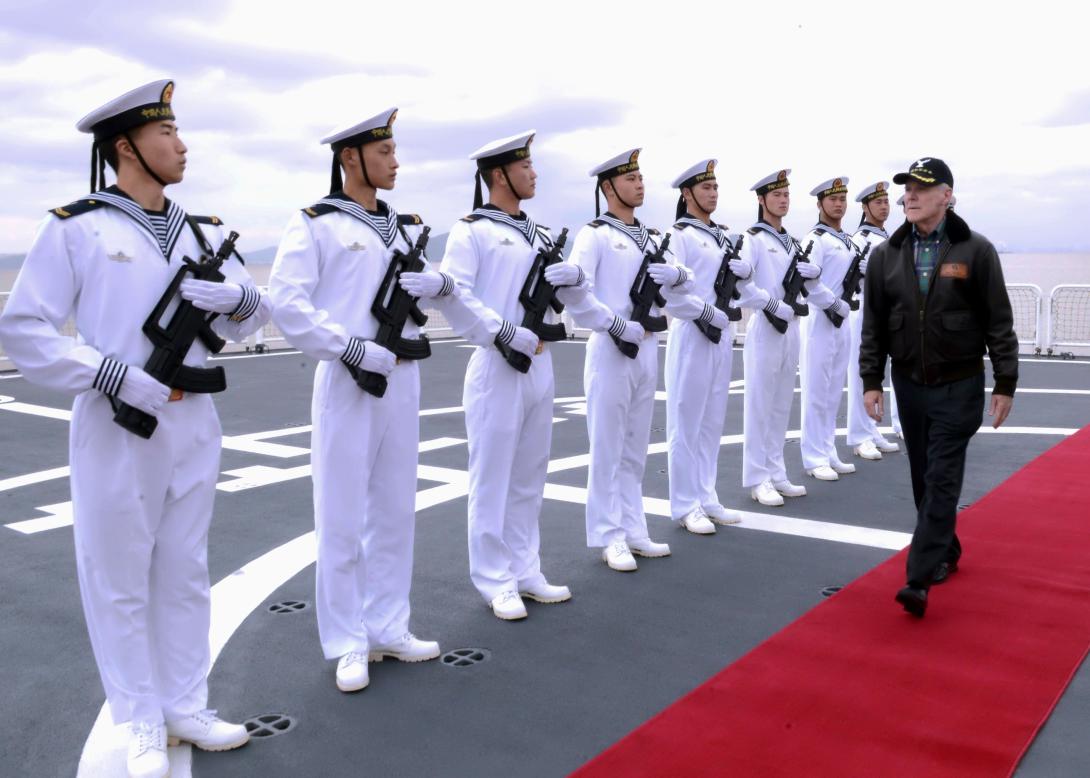U.S. DoD Assesses China’s Military Strategy
The U.S. Department of Defense published on Tuesday the China Military Power Report (CMPR), a Congressionally mandated report to assess the course of the Peoples Republic of China (PRC) military and security strategy.
Following the National Security Strategy document from the White House defining China as the central power challenging the rules-based system, this document centers on the Asian power's aim to achieve “the great rejuvenation of the Chinese nation” by the year 2049, and the ways this country has suggested it will act in the future.
Covering five chapters that analyze the country's armed forces’ strategy, forces, global presence, modernization and diplomacy, special attention is given to information and technological advantages.
The document identifies three fears Beijing has when looking at the U.S. military power:
- Rapid advances in missile defense technology, rendering China's competitive advantages in this field useless
- The U.S. and allies’ hypersonic capabilities may credibly threaten China’s small arsenal of land-based weapons
- Technological developments to conduct counterforce strikes with low-yield nuclear warheads, advanced space surveillance assets and cyberspace attacks to undermine nuclear command and control
As a central concern according to this document, information flows are understood as battlefield data and public narratives. The information environment at the beginning of the crisis in Ukraine has been identified by Chinese scholars as a central disputed area prior to the establishment of a powerful and mobilizing strategy around Kiev's intentions.
Therefore, the armed forces should prepare to shape public opinion in support of its objectives. “[People’s Liberation Army] researchers have called on the PLA to improve their big data, natural language processing, and deep learning capabilities in order to improve its ability to create deep fakes, disseminate propaganda, and analyze internet users’ sentiments,” states the U.S. document.
In terms of long-term technological dominance, the PRC has three main goals:
- Modern and self-reliant defense-industrial sector, with dual-use technologies
- Upgraded espionage activities to acquire sensitive, dual-use and military-grade equipment as well as improved weapon system research, development, acquisition, testing, evaluation and production
- Increasing military spending to remain the world's second-largest investor in this field, keeping much of its resources off the official budget in “gray areas”
In terms of espionage, the document alerts that China is a “sophisticated, persistent cyber-enabled espionage and attack threat to military and critical infrastructure systems through its efforts to develop, acquire, or gain access to information and advanced technologies.”
The document also analyzes the main trends in development for the whole industry, placing the country at the top-tier in missile and space industry, as the largest shipbuilder, an armament industry that struggles to establish itself internationally and an aviation industry that still has some way to go to achieve the ambitious goals set by Beijing planners.





Comments